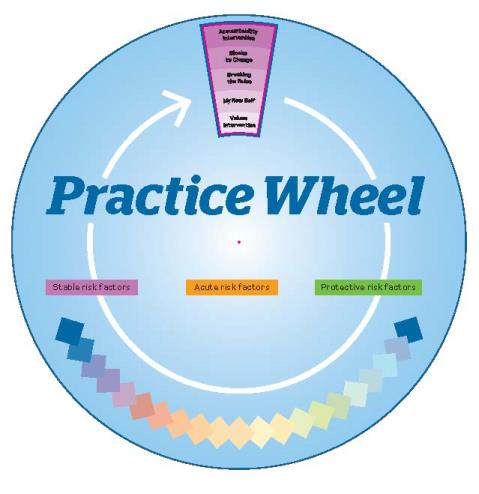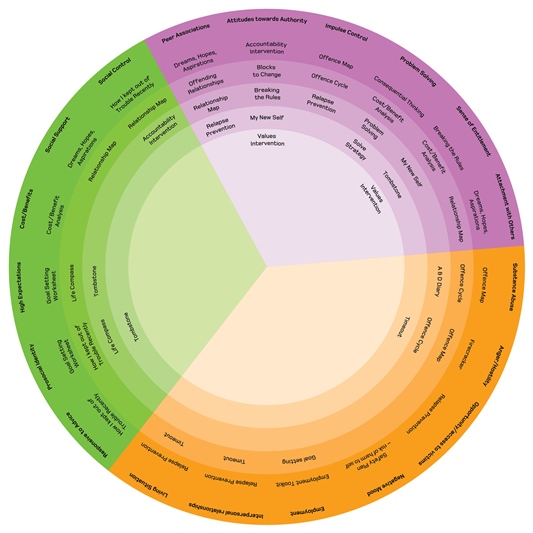Practice note: Probation practice wheel
Darius Fagan
Chief Probation Officer, Department of Corrections
Author biography:
Darius Fagan has worked for the New Zealand Department of Corrections since 2001. He started his career as a probation officer and believes in the important role probation officers can play in helping offenders change their lives. In his role as Chief Probation Officer, Darius is passionate about designing practice that adheres to evidence-based concepts that can be practically applied by officers in their day-to-day work.
The day-to-day work of probation officers in New Zealand is guided by an Integrated Practice Framework, which constitutes a comprehensive, principles-based guide to effective correctional practice. It includes a wide range of tools touching on all aspects of the work, from risk assessment, through to working with families. To help practitioners make best use of these practice tools, a “practice wheel” (see figs 1 & 2) has been developed. Some of the background to the latest versions of the practice tools, which are now in circulation, is explained here.
The Integrated Practice Framework itself was designed to help practitioners adhere to “risk, need and responsivity” (RNR) principles. In particular, this means identifying specific criminogenic factors which, based on research, are the most effective to target for crime reduction.
The Department’s probation officers make extensive use of the DRAOR (Dynamic Risk Assessment of Offender Re-entry) tool. This is not just a useful assessment tool for establishing levels of risk; it also helps practitioners identify specific target areas to focus on through their case work.
The DRAOR assessment helps staff analyse risk in two areas; Acute Risk and Stable Risk. It can also help to assess and identify protective factors that are likely to support crime desistance. From these assessments, casework can be focused to reduce risk factors and increase protective factors. To work with each risk or protective factor practitioners have access to a number of interventions and practice tools.
The probation practice wheel helps staff to determine which tools or interventions to use in their case work. Simply, the wheel aligns with one risk factor or protective factor and displays in a cut-out window which tools or interventions to apply. The corresponding references or guidance relating to each tool or intervention can then be found in the practice centre. The tool is a starting point to help with prioritisation and planning following completion of the DRAOR assessment.
A second version of the practice wheel has recently been made available to Corrections staff. Staff can obtain this from their friendly local practice leader.
Figure 1:
The Practice Wheel

Figure 2:
“Internal” view of practice wheel, showing text


